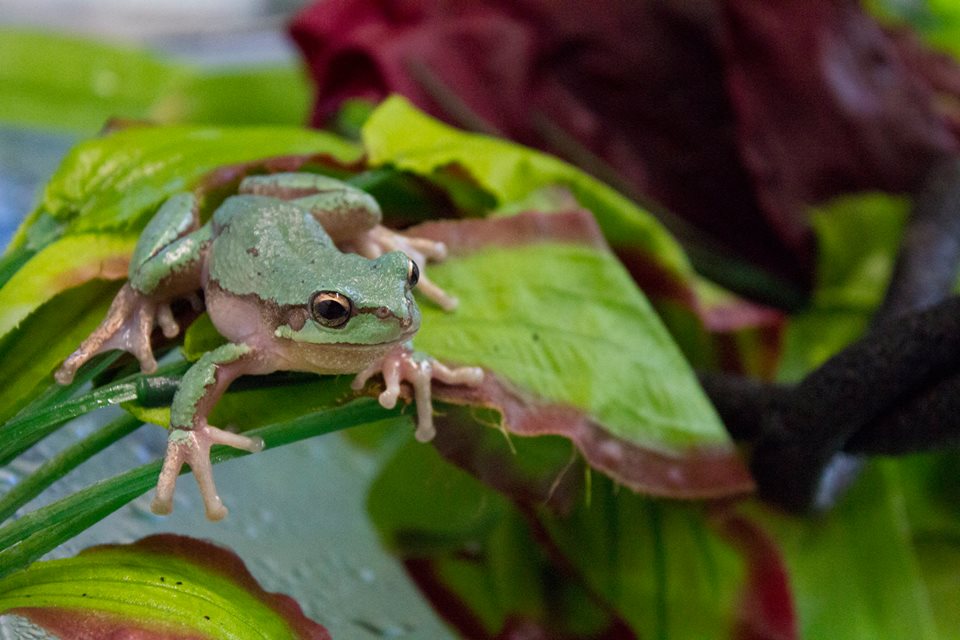Did you know that we have frogs at Bonorong?!
Well Fronk, Freddo, Kermit, Gronk and Charlie are five very special frogs that call Bonorong home!
These little guys are 'Tasmanian Tree Frogs', but unfortunately they are in quite a bit of trouble, just like many other frog species around the world. Amphibian populations in Tasmania are at risk from the spread of a fungal infection called chytridiomycosis (or chytrid for short), which is responsible for the extinction and population declines of hundreds of species all around the planet.
The beautiful Tasmanian Tree Frog lives predominantly in the South West Wilderness World Heritage Area and while this is one of the most secluded places in the world, chytrid has already been found in the region. With very low population numbers reported for the Tasmanian Tree Frog in general, it is feared that the species could be heavily and quickly impacted if infected by chytrid. Worryingly, trials have shown that this species is more susceptible to chytrid infection than many other frogs around the world.
This situation means that maintaining a captive insurance population and attempting to breed the species has taken on a new urgency. In partnership with the Tasmanian Government, and with support from NRM South through funding from the Australian Governments National Landcare Programme, Bonorong has already begun this pioneering work for the first time in captivity.
We have set up a quarantine facility on site at Bonorong to try and establish a breeding program and help save the species. So little is known about Tasmanian Tree Frogs that the research being undertaken is essential if management and conservation measures are to be effective. Check out the below flyer for some easy steps to help reduce your impact on frogs & the environment.

































